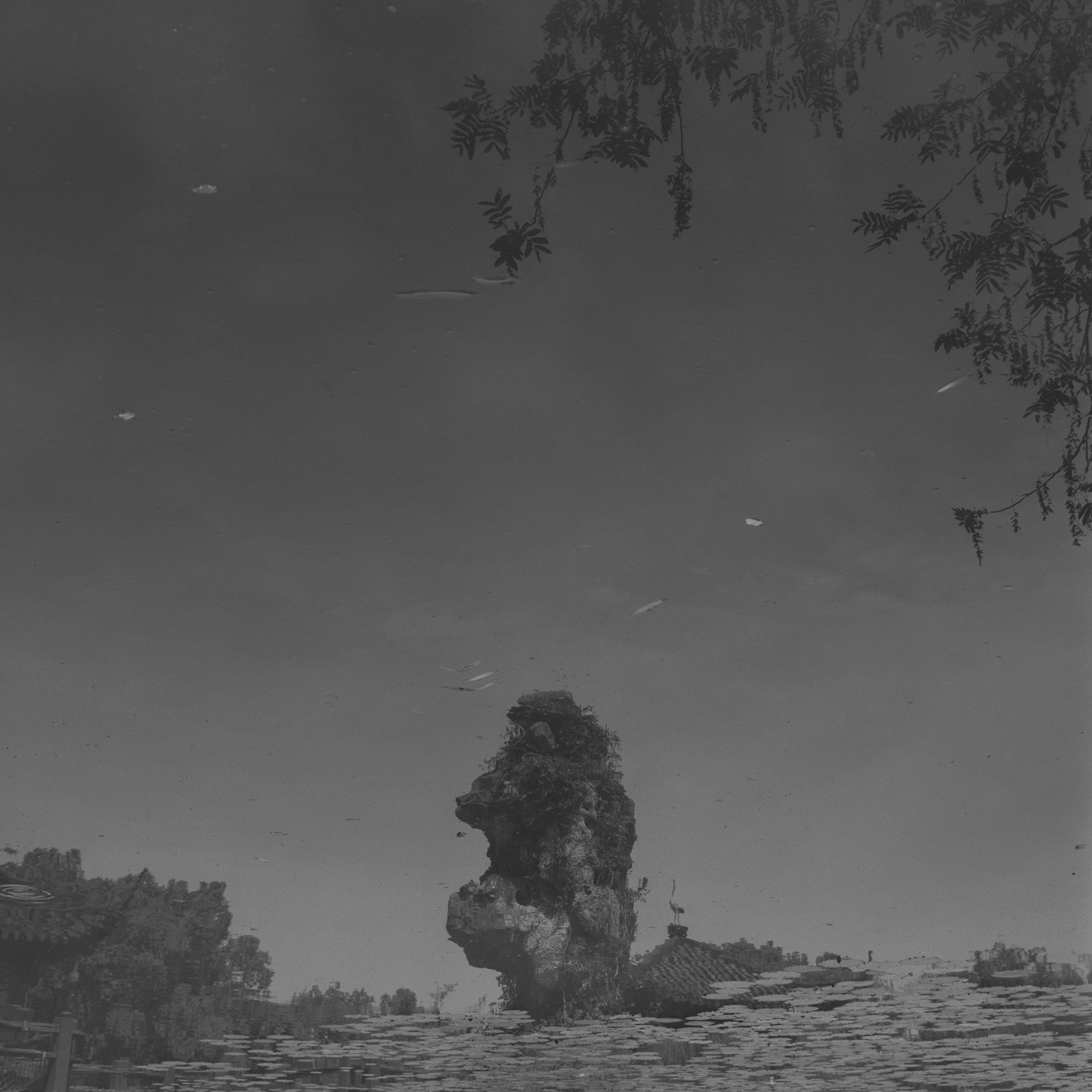Orogeny: Heavenly Rocks
造山 · 飞来石
Bai Juyi, a renowned Chinese poet, described the garden rocks as “if they had fallen from Heaven, unlike what exists in the human realm.” In my Orogeny: Heavenly Rocks series, I flip the photograph vertically, remove its background, and transform the image into a photographic negative. The shadows of my photograph, composed of the cavities, indentations, and perforations of the rocks, now become the highlights. The opposite yet complementary quality of light and dark on the rocks symbolizes the mighty force of nature.
白居易的五言古诗《双石》将奇石描绘为 “忽疑天上落,不似人间有。” 我的《造山 · 飞来石》系列则将中国园林内拍摄的奇石全景图像上下颠倒,并转换为负片。图像中原本的阴影部分被转换为高光部分,从而突出了园林奇石瘦、皱、漏、透、嵌空、穿眼、婉转、险怪等特点。石上明暗的对比象征自然的力量。
















Orogeny: Shou, Zhou, Lou, Tou
造山 · 瘦透漏皱
The monumental Taihu stones dominate the classical Chinese gardens as the focus of visual attention. Eroded by the crashing waves of Lake Tai, these exotic stones are riddled with holes and pores. For centuries, Chinese emperors, politicians, literati, and artists have proudly displayed their fetishistic love and philosophical appreciation of Taihu stones, embracing the harmonious relationship between nature and human beings in Chinese gardens.
在中国古典园林中,一块太湖石即可代表自然界的百仞高山、千里景色。世世代代的帝王政客、文人墨客对奇石的痴迷崇拜不胜枚举。亘古不变的园林奇石蕴涵了中国传统文化,以及古典造园艺术的重要概念,即人与自然的和谐相处。
Orogeny: Grotto Heavens
造山 · 别有洞天
In Orogeny: Grotto-Heavens, I used the Van Dyke brown process and the circular form to excavate the philosophical and religious connotations of garden rocks. Grotto-heavens are sacred Taoist caves that are believed to be portals to different supernatural realms. I photographed the unique textures inside the pores and cavities of garden rocks. My exploration of hidden spaces in Chinese gardens symbolizes a quest for a utopian universe.
而在《造山 · 别有洞天》系列中,我运用范戴克古典印相工艺描绘了园林奇石以及假山内部的另一个世界。洞天是道教传说中的圣地与仙境,而假山石的洞中有山,山中有洞。将假山石中别有洞天的风景用摄影捕捉,并用古典印相工艺呈现出来,便是我寻找世外桃源的过程。































